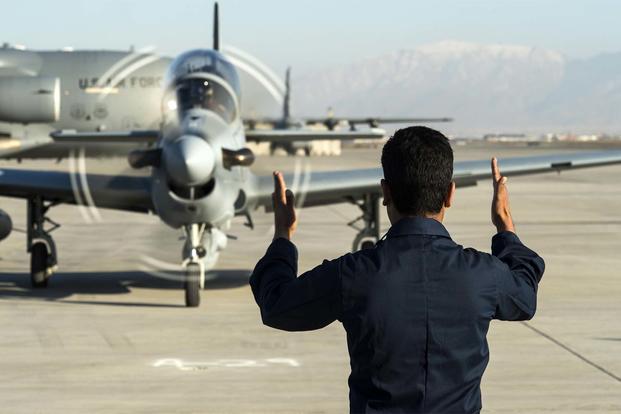The A-29 Super Tucano turboprops supplied to the Afghan Air Force by the U.S. have flown hundreds of combat missions amid concerns over mounting civilian casualties caused in the airstrikes, Gen. John Nicholson said Thursday.
"We've grown our pool of pilots to around 20" for the eight A-29s now in Afghanistan, said Nicholson, commander of U.S. Forces-Afghanistan and NATO's Resolute Support mission, at a hearing of the Senate Armed Services Committee.
Since the Embraer EMB 314 Super Tucanos became operational in April 2016, they "have done in excess of 800 missions" flown by the Afghan pilots trained at Moody Air Force Base, Georgia, Nicholson said.
"The system that does this is more than the pilots and aircraft," he said. "It also involves the Afghan tactical air controllers on the ground and the Afghan maintainers back at the base" who also are trained in the U.S.
"We have seen progress in all these areas," Nicholson said.
Sen. David Perdue, a Georgia Republican, cited the statement last year of Army Gen. John Campbell, then the U.S. commander in Afghanistan, that one of the greatest challenges faced by the Afghan forces was "overcoming their extremely limited ability to organize close-air support."
Nicholson agreed, but said the Afghans are making progress. "In fact, it's been very impressive for such a young capability," he said. Nicholson also said he favored the continuation and expansion of the Special Immigrant Visa program that allows Afghan pilot and maintainers to come to the U.S. to train. However, the U.N. Assistance Mission in Afghanistan, or UNAMA, released a report in Kabul on Feb. 7 stating that in 2016, "Airstrikes carried out by Afghan and international forces caused 590 civilian casualties (250 deaths and 340 injured), nearly double that recorded in 2015 and the highest since 2009."
The airstrike figures were part of an overall report stating that in 2016, "11,418 conflict-related civilian casualties, including 3,498 killed and 7,920 injured" were recorded. About two-thirds of the civilian casualties were attributed to the Taliban and other insurgents, UNAMA said. According to an analysis of figures from the U.N., Afghan forces and the U.S. by Military Times, the A-29 pilots are firing and dropping munitions at a far higher rate than U.S. pilots.
Of 328 A-29 missions examined by Military Times in 2016, 138 involved firing or the dropping of munitions, a rate of 43 percent. U.S. aircraft had a drop rate of about 12 percent, the analysis showed.
-- Richard Sisk can be reached at Richard.Sisk@Military.com.



























